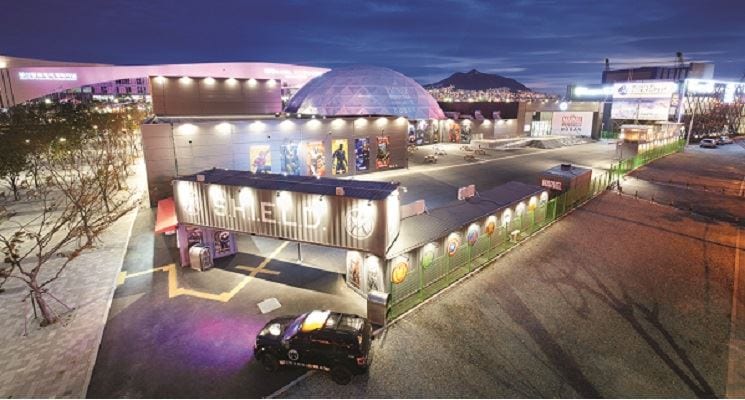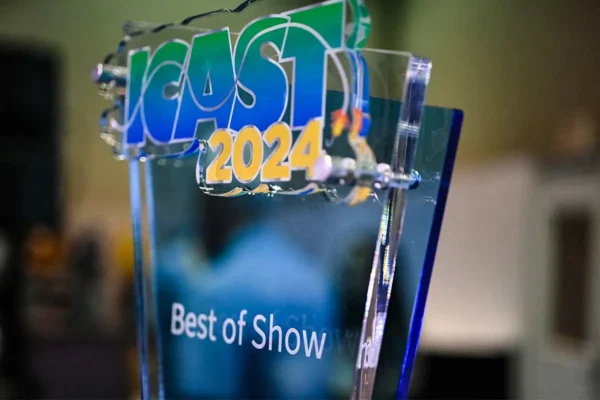Pictured: The Marvel Experience, Busan, South Korea
by Sarah Chew
Think about a recent museum experience you had that you found rewarding and stimulating. You will soon realize museum exhibits have long since moved on from classic, static viewing, and are increasingly taking advantage of visuals, audio and interactive technology to create experiential environments that engage the senses. A museum is no longer a repository of information, but rather a catalyst in the visitor’s learning journey. People do not want to visit a regular exhibition; they crave the temporary escape into other worlds and want to be immersed in them.
Technology extends the experience
Marvel Cinematic Universe created a world people were drawn to. Last October, a hyper-reality exhibition–The Marvel Experience launched in Busan, South Korea. As opposed to the format of traditional exhibitions dedicated to movie sets, props and costumes, The Marvel Experience offered visitors an enriching and immersive experience to live within the Marvel Cinematic Universe and become part of the adventure. With the latest in state-of-the-art interactive and multimedia technology, visitors had the opportunity to fly with Iron Man, smash with Hulk and scale buildings with Spider-Man. The mobile exhibition also housed the world’s only 360-degrees 3D stereoscopic theatre, holograms and a 4D-motion ride. These elements gave visitors a dynamic way to experience Marvel entertainment and put them right in the middle of the action.
Connecting audiences through open-ended engagements
Designing a great visitor experience requires much effort and expertise. It should be approached from a holistic perspective that considers the entire experience. A single interaction or a piece of content cannot survive on its own. From finding inventive ways of designing an exhibition topic to balancing the use of interactives, media and text, every element converges to contribute to an immersive experience. Every so often, a slightly theatrical approach is used in telling the story. In Dialogue with Time–Embrace Aging at the Science Centre Singapore, the exhibition explores the topic of aging. It was designed as a physical platform with multi-layered content and a visitor journey that delivered a coherent and compelling experience. Apart from providing insights into the effects of growing old, the exhibition offered immersive interactions and simulated scenarios through the use of role play, game theory and engaging in discussions with the senior guides. The key to an enriching experience and successful visitor learning is to help bridge the original contexts of exhibition topics and objects with visitors’ everyday lived context. If we can create an engaging story, we will inspire an enduring connection to the subject. In its simplest form, this not only provides an appreciation but also, the power to ignite passionate responses, deliver experiences and drive demand.
Adopting new approaches in the face of changing preferences
Increasingly, most museums are facing up to the challenges of redesigning with a younger generation in mind and competing for visitors’ time by studying other industries. From events to retail, useful approaches and techniques to understand visitors and communicate what is on offer can be employed. The recently revamped Singapore Maritime Gallery looks to the future, both in content and presentation. From steering a ship via a simulator and an AR “ship spotter” that highlights the different vessels that ply Singapore’s waters, to a designated zone for children where interactive activities illustrate the concept of navigational safety, all visitors get a hands-on experience of what it is like to work at sea. Also new are multimedia displays on the latest maritime technologies, a communal space to host exhibitions and workshops, as well as a resource corner to aid student research with maritime-related materials and publications. This refreshed gallery is a great platform in reaching out to younger Singaporeans and interest them not only in the heritage, but also a career in the maritime sector.
Sarah Chew is the executive director of Kingsmen Exhibits Pte Ltd, a leading communication design and production group in Asia Pacific and the Middle East.
This story originally appeared in the May/June issue of Exhibit City News, p. 54.






























